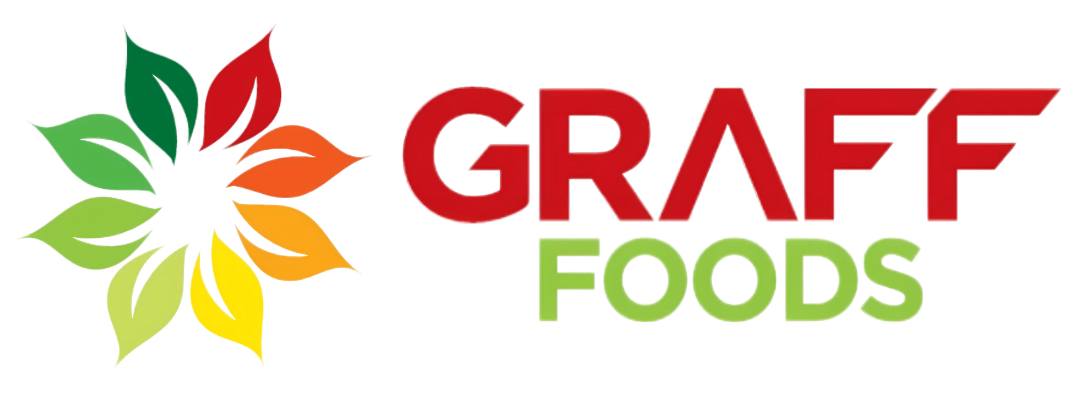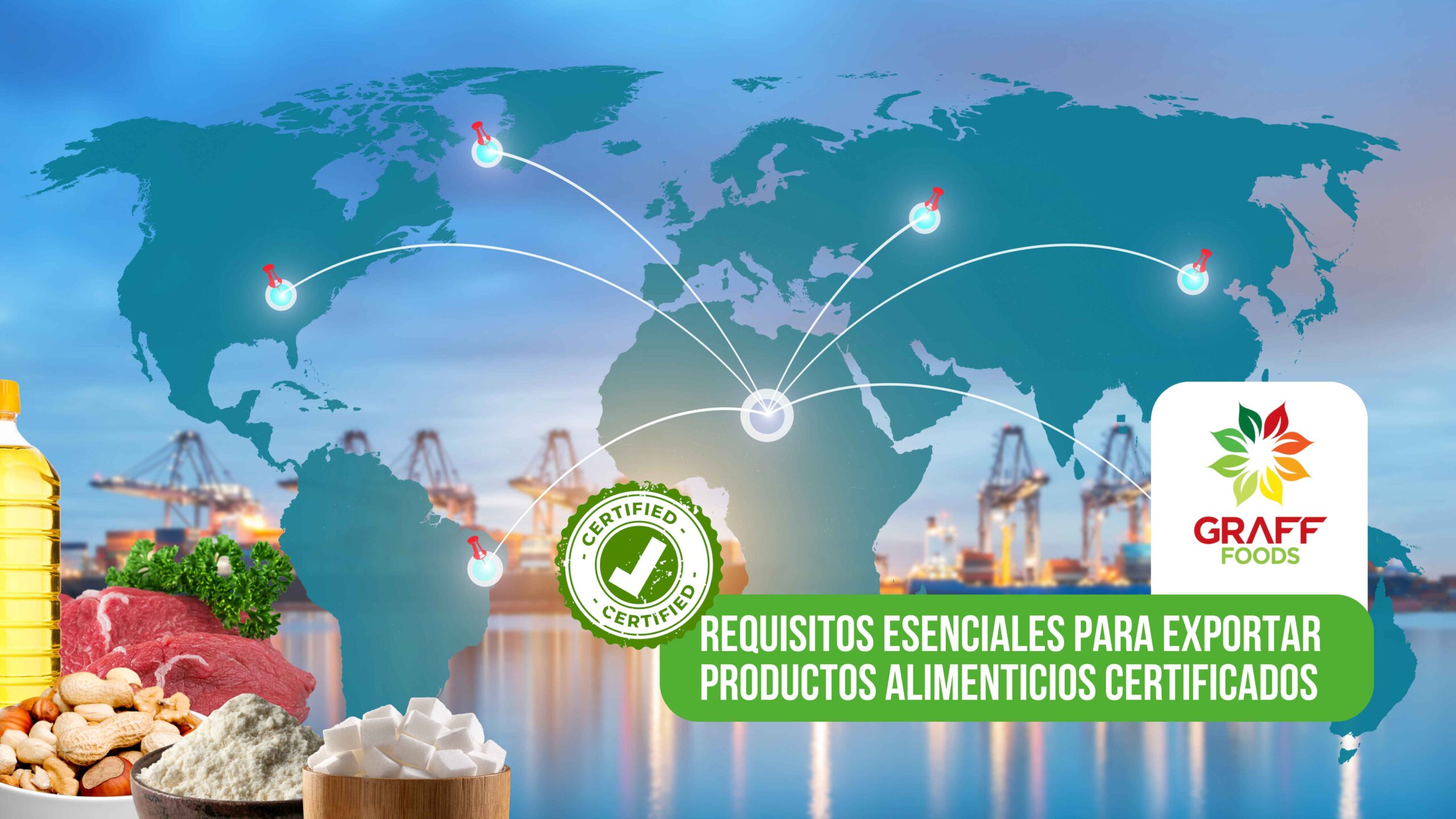Expanding a food business into international markets is an opportunity for growth, increased profitability, and access to a broader customer base. However, exporting food is not as simple as shipping products overseas. Each country enforces strict regulations to ensure that imported food products meet high standards of safety, hygiene, and quality. These measures are in place to protect consumers and maintain food security at a global level.
Having a high-quality product or strong market demand is not enough. To export certified food products, businesses must comply with strict hygiene and safety standards, obtain the necessary documentation, and adhere to labeling and packaging regulations specific to each destination. Additionally, understanding the required certifications for different international markets and knowing how to obtain them is essential for a seamless export process.
A single mistake, such as improper labeling, missing documentation, or failure to meet sanitary regulations, can lead to delays, product rejections at customs, or even a complete ban on sales in the target country. This is why businesses must be well-informed and fully compliant before initiating the export process.
In this guide, we cover everything you need to know to successfully export certified food products , ensuring compliance with international standards while minimizing risks and avoiding unnecessary obstacles.
Why Do Countries Enforce Export Requirements?
Governments worldwide impose strict import regulations to safeguard public health and ensure that all food products entering their markets meet rigorous safety and quality standards. Each country has its own set of laws, typically based on principles of hygiene, traceability, and risk management, ensuring that imported food is safe for consumption and free from harmful contaminants.
In addition to food safety, these regulations also seek to prevent fraud in international trade, protect local production, and ensure that imported products meet sustainability and environmental responsibility standards.
Failing to meet these regulations can result in customs seizures, heavy fines, or a total ban on distribution in the destination country. To avoid such risks, exporters must thoroughly research and understand the legal and technical requirements before attempting to export certified food products. Not only does compliance facilitate smoother market entry, but it also strengthens a company’s reputation and competitiveness in global trade.
Key Regulations for Exporting Certified Food Products
Each market has its own regulatory framework, but several internationally recognized standards serve as essential references for food exporters:
1. Codex Alimentarius
Developed by the FAO (Food and Agriculture Organization) and the WHO (World Health Organization), the Codex Alimentarius establishes global guidelines for food safety and quality. Many countries adopt these standards as a basis for their national food laws.
2. FDA Regulations in the United States
To export food to the U.S., businesses must comply with the Food and Drug Administration (FDA) regulations, which include mandatory facility registration and adherence to the Food Safety Modernization Act (FSMA).
3. European Union Regulations
The EU Regulation 178/2002 lays out the core principles of food safety across Europe. Additionally, importers often require certifications such as HACCP (Hazard Analysis and Critical Control Points) and BRC (British Retail Consortium) to ensure compliance with high safety and traceability standards.
4. Sanitary Standards in Asia
Markets such as China, Japan, and South Korea have their own strict food import regulations. In China, for instance, the General Administration of Customs (GACC) oversees rigorous inspections of imported food products.
Required Documentation for Exporting Certified Food Products
Proper documentation is crucial for international food exports. Missing or incorrect paperwork can lead to delays, fines, or rejection of shipments. The most common required documents include:
1. Certificate of Origin
This document verifies the country where the food product was manufactured and is essential for determining applicable tariffs and trade agreements.
2. Sanitary Certificate
Issued by the regulatory authority in the country of origin, this certificate confirms that the food product meets all hygiene and safety standards required for export.
3. HACCP Certification
The HACCP (Hazard Analysis and Critical Control Points) system is mandatory in many markets and ensures that food is processed under strict safety controls to prevent contamination.
4. Registration in the Destination Country
Some countries require exporters to register their products and manufacturing facilities before permitting entry of goods into the market.
Labeling and Packaging Requirements for Exported Food
Proper labeling and packaging are essential for compliance when export certified food products without issues.
1. Mandatory Labeling Information
Although labeling requirements vary by country, most regulations mandate the following information:
- Name of product
- List of ingredients
- Nutritional information
- Expiry date
- Production batch number
- Country of origin
- Storage instructions
2. Language Requirements for Labels
In the United States, labels must be in English. In the European Union, labeling must be in the official language(s) of the country of sale. In Japan and China, products must include translations into the local language for compliance.
3. Export-Ready Packaging
Packaging must protect food during transport and meet specific market regulations. In some cases, ISO 22000-certified packaging is required to ensure food safety throughout the supply chain.
Customs Procedures and International Certifications
Navigating customs regulations is a crucial step in successfully export certified food products without issues.
1. Tariff Classification Code
Each product is assigned a tariff code under the Harmonized System (HS), which determines applicable duties and taxes for different destination markets.
2. Additional Certifications
Beyond the basic requirements, certain certifications help exporters access high-demand markets more efficiently:
- BRC Global Standard: Essential for suppliers to major retailers in Europe.
- IFS Food Certification: Required by many global distributors and retailers.
- Fair Trade Certification: For products that meet ethical sourcing and sustainability criteria.
Best Practices for Successfully Exporting Certified Food Products
To avoid setbacks and ensure a smooth export process, follow these key recommendations:
- Understand the regulatory requirements of your target market: Research country-specific laws before initiating exports.
- Partner with an experienced logistics provider: A knowledgeable partner can help navigate customs and regulatory hurdles.
- Maintain strict quality control at every stage: Ensuring compliance with food safety standards minimizes the risk of rejection.
- Keep documentation up to date: Properly maintained certificates prevent customs delays and legal complications.
- Use technology for product traceability: Digital tracking ensures compliance with international food safety regulations.
Graffoods: Your Trusted Partner for Exporting Certified Food Products
Navigating the complexities of food exportation can be challenging, but with the right expertise and support, expanding your business internationally becomes much easier. At Graffoods, we provide comprehensive logistics solutions and a global network of trusted suppliers to ensure that your products reach their destination in full compliance with regulatory standards.
If you are ready to export certified food products, get in touch with us today. Let’s explore the best strategies to help your business thrive in international markets.
Request a consultation now and expand your global reach with confidence. Click here

